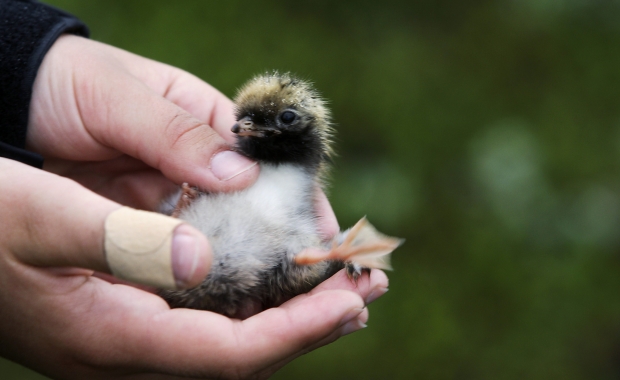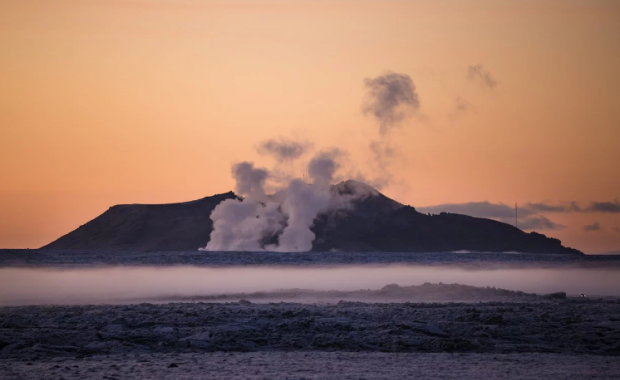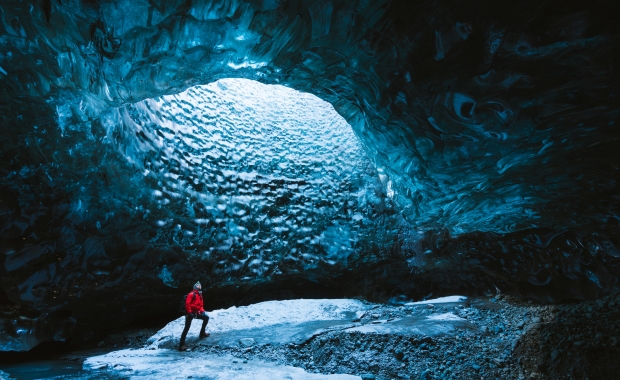The last arctic terns are leaving Iceland for their wintering regions in the South Atlantic, along the shores of Antarctica. The groups leaving Iceland this year include unusually high numbers of young birds, since nesting by the tern was more successful this year in many places around Iceland than any time in recent memory.
Nesting in Reykjavík better than any time in 30 years
Nesting by tern in Reykjavík was more successful than any time in 10-30 years. Jóhann Óli Hilmarsson ornithologist told the local newspaper Morgunblaðið that more terns had nested by the downtown lake in Reykjavík than any time in the past 30 years. At the same time nesting in Seltjarnarnes, the western tip of the Reykjavík peninsula, and the island Grótta, just off the tip, was the most successful in 10 years.
Tern populations in Southern and South-Western Iceland were all similarly successful this year. Jóhann told Morgunblaðið that the tern populations around the village of Vík in Southern Iceland, and that by the village of Grindavík in the Reykjanes peninsula had also been very successful this year. Ævar Petersen, a biologist who has been monitoring the sea-bird populations in Western Iceland told Morgunblaðið all sea bird populations in the area ranging from Breiðafjörður bay to the Westfjords seemed to have been very successful this year.
The tern needs several more good years to recover
Tern feed primarily off sand eels, as do many other species of sea birds. The collapse of the raitt‘s sand eel population in the past years, which is believed to be connected to global climate change, has caused the population of many sea birds to plummet.
Despite a good year the population outlook for the tern, and other sea birds is troubling. Ævar Petersen told Morgunblaðið that although this year had produced a large cohort of young birds the nesting has gone very poorly for the past decade. This means the bird populations must experience several very successful years to reach former sizes.
The arctic tern has the longest migratory route of any bird, spending the summers in the artcic and the winter in Antarctica, where it is summer during the arctic winter.
The last arctic terns are leaving Iceland for their wintering regions in the South Atlantic, along the shores of Antarctica. The groups leaving Iceland this year include unusually high numbers of young birds, since nesting by the tern was more successful this year in many places around Iceland than any time in recent memory.
Nesting in Reykjavík better than any time in 30 years
Nesting by tern in Reykjavík was more successful than any time in 10-30 years. Jóhann Óli Hilmarsson ornithologist told the local newspaper Morgunblaðið that more terns had nested by the downtown lake in Reykjavík than any time in the past 30 years. At the same time nesting in Seltjarnarnes, the western tip of the Reykjavík peninsula, and the island Grótta, just off the tip, was the most successful in 10 years.
Tern populations in Southern and South-Western Iceland were all similarly successful this year. Jóhann told Morgunblaðið that the tern populations around the village of Vík in Southern Iceland, and that by the village of Grindavík in the Reykjanes peninsula had also been very successful this year. Ævar Petersen, a biologist who has been monitoring the sea-bird populations in Western Iceland told Morgunblaðið all sea bird populations in the area ranging from Breiðafjörður bay to the Westfjords seemed to have been very successful this year.
The tern needs several more good years to recover
Tern feed primarily off sand eels, as do many other species of sea birds. The collapse of the raitt‘s sand eel population in the past years, which is believed to be connected to global climate change, has caused the population of many sea birds to plummet.
Despite a good year the population outlook for the tern, and other sea birds is troubling. Ævar Petersen told Morgunblaðið that although this year had produced a large cohort of young birds the nesting has gone very poorly for the past decade. This means the bird populations must experience several very successful years to reach former sizes.
The arctic tern has the longest migratory route of any bird, spending the summers in the artcic and the winter in Antarctica, where it is summer during the arctic winter.







